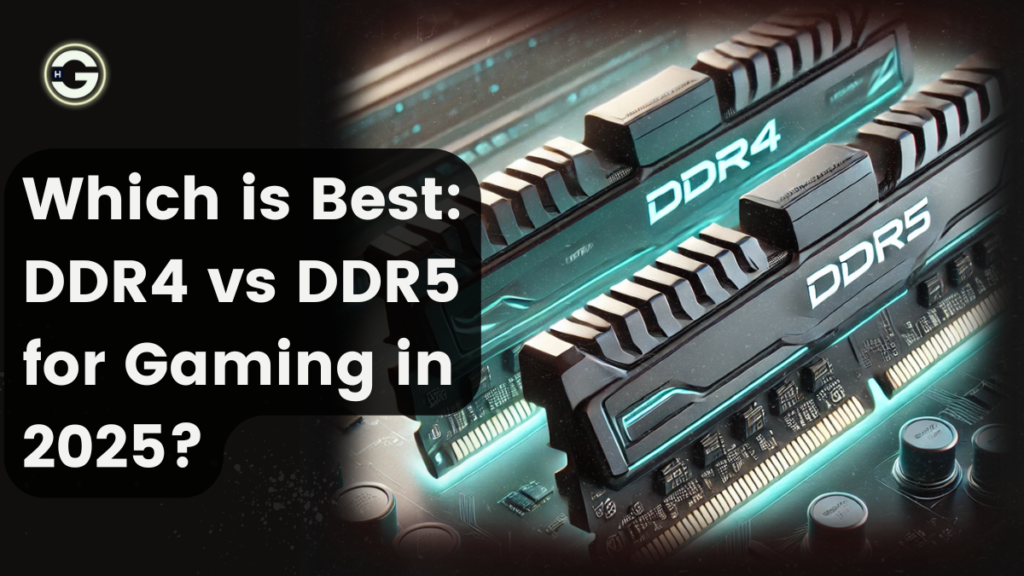As gaming continues to push hardware boundaries, gamers are often left wondering: “Which memory type is better for gaming: DDR4 or DDR5?” In this blog, we delve into the technical details, benchmarks, and user experiences to help you decide which RAM type suits your gaming needs.
Understanding DDR4 and DDR5
What is DDR4?
DDR4 (Double Data Rate 4) is the fourth-generation synchronous dynamic random-access memory. Introduced in 2014, it has been the standard for several years. DDR4 offers a good balance between speed, capacity, and price.
Key Features of DDR4:
- Data Rate: 2133 to 3200 MT/s (with overclocking options beyond 4000 MT/s).
- Voltage: Operates at 1.2V, reducing power consumption compared to DDR3.
- Latency: CL16 to CL22, depending on the speed.
- Maximum Module Size: Typically 16GB or 32GB.
What is DDR5?
DDR5 is the latest memory standard, offering significant advancements over DDR4. Released in 2021, DDR5 aims to meet the demands of high-performance computing, including gaming.
Key Features of DDR5:
- Data Rate: Starts at 4800 MT/s and can reach beyond 8400 MT/s with overclocking.
- Voltage: Operates at 1.1V, further improving power efficiency.
- Latency: Typically CL36 or higher due to increased speed.
- Maximum Module Size: Supports up to 128GB per module.
- Integrated Power Management: Moves power management from the motherboard to the RAM module.
Performance Comparison: DDR4 vs DDR5 for Gaming
1. Gaming Benchmarks
Recent tests on modern gaming setups have shown varying results. According to multiple benchmarks:
- DDR4 (3200 MT/s):
- Performs well in most gaming scenarios, providing smooth gameplay at 1080p and 1440p resolutions.
- Minimal bottleneck with GPUs like the NVIDIA RTX 30 series or AMD RX 6000 series.
- DDR5 (5200 MT/s and above):
- Offers a slight FPS improvement, particularly in CPU-intensive games like “Cyberpunk 2077” or “Total War: Warhammer III.”
- Enhanced frame stability in high-refresh-rate gaming (144Hz or higher).
2. Latency vs Speed
While DDR5 offers higher bandwidth, its latency (measured in CAS cycles) is generally higher than DDR4. However, the sheer speed of DDR5 compensates for this in most gaming scenarios.
| Specification | DDR4 (3200 MT/s) | DDR5 (5200 MT/s) |
|---|---|---|
| Latency (CAS) | CL16 | CL36 |
| Bandwidth | ~25.6 GB/s | ~41.6 GB/s |
| Voltage | 1.2V | 1.1V |
Cost Analysis
- DDR4: More affordable and widely available. A 16GB kit (3200 MT/s) typically costs between $50 and $70.
- DDR5: Expensive due to newer technology. A 16GB kit (5200 MT/s) ranges from $100 to $150.
While DDR5 prices are gradually declining, DDR4 remains a budget-friendly choice for gamers on a tighter budget.
Compatibility Considerations
- DDR4: Compatible with most current-generation CPUs and motherboards, including AMD Ryzen 5000 series and Intel 10th/11th Gen processors.
- DDR5: Requires a compatible motherboard and CPU. Supported by Intel 12th/13th Gen (Alder Lake/Raptor Lake) and AMD Ryzen 7000 series processors.
Ensure your motherboard supports the chosen memory type before upgrading.
Future-Proofing
DDR4:
- Mature and reliable technology.
- Limited upgrade potential as future CPUs are increasingly optimized for DDR5.
DDR5:
- Designed for next-gen gaming and workloads.
- Better investment for those planning to upgrade their systems within the next 2-3 years.
Conclusion: Which is Best for Gaming?
- Choose DDR4 if:
- You’re on a budget.
- You already have a DDR4-compatible motherboard and CPU.
- Your focus is on 1080p or 1440p gaming without high-refresh-rate demands.
- Choose DDR5 if:
- You’re building a high-end gaming rig.
- You want to future-proof your setup.
- You’re gaming at 1440p or 4K with a high-refresh-rate monitor.
As of 2025, DDR5 is undoubtedly the future, but DDR4 still holds its ground as a cost-effective solution for gaming. Your choice should depend on your budget, gaming preferences, and upgrade plans.
FAQs
1. Can I use DDR4 and DDR5 together? No, DDR4 and DDR5 are not cross-compatible due to differences in architecture and pin configurations.
2. Is DDR5 worth the price for gaming? For most gamers, the performance gain is incremental. However, if you’re building a high-end system, DDR5 is worth considering.
3. Will DDR4 become obsolete soon? While DDR5 adoption is growing, DDR4 will remain relevant for at least a few more years due to widespread compatibility and availability.

